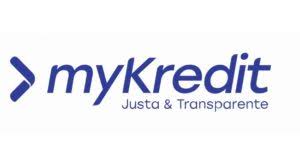in Spain
Introduction
The credit market in Spain plays a crucial role in the country’s economy by providing individuals and businesses with access to funds for various purposes, such as personal expenses, investments, and business expansion. This overview will delve into the key aspects of the credit market in Spain, including its structure, major players, regulations, and recent trends.
Structure of the Credit Market
The credit market in Spain comprises various components, including banks, savings banks (cajas de ahorros), credit unions (cooperativas de crédito), and non-banking financial institutions. The sector is supervised and regulated by the Bank of Spain (Banco de España) and the National Securities Market Commission (Comisión Nacional del Mercado de Valores).
Banks
Spanish banks are the primary providers of credit in the country. They can be categorized into two main groups: commercial banks and savings banks. Commercial banks, which include both domestic and foreign entities, focus on providing a wide range of financial services to individuals and businesses. Savings banks, historically associated with regional entities, have undergone significant restructuring over the past decade.
Credit Unions
Credit unions, also known as cooperative banks, are member-owned financial institutions that offer credit and other financial services to their members. They operate based on the principles of cooperation, mutual assistance, and democratic control. While credit unions are not as prevalent as banks in Spain, they serve specific communities and sectors, such as agricultural or worker cooperatives.
Non-Banking Financial Institutions
In addition to banks and credit unions, Spain’s credit market also includes non-banking financial institutions. These institutions provide specialized credit services, such as consumer finance, leasing, factoring, and mortgage lending. They often cater to niche markets and offer more flexible credit options compared to traditional banks.
Regulatory Framework
The credit market in Spain operates under a robust regulatory framework designed to ensure stability, transparency, and consumer protection. The Bank of Spain, as the central bank, oversees the overall functioning of the financial system and ensures compliance with prudential regulations. The National Securities Market Commission is responsible for the supervision of securities markets, including debt securities issued by financial institutions.
The regulatory framework includes measures such as capital adequacy requirements, liquidity standards, risk management guidelines, and disclosure obligations. These regulations aim to promote the stability of financial institutions, safeguard depositor funds, and prevent excessive risk-taking that could jeopardize the overall financial system.
Key Players
Several major banks dominate the credit market in Spain. These include Banco Santander, BBVA (Banco Bilbao Vizcaya Argentaria), CaixaBank, Bankia, and Banco Sabadell. These banks have a vast network of branches across the country and offer a wide range of credit products to individuals and businesses.
In recent years, there has been a trend of consolidation in the banking sector, with larger banks acquiring smaller entities or merging with each other. This consolidation aims to enhance efficiency, strengthen capital positions, and adapt to changing market dynamics.
Credit Market Trends
The credit market in Spain has undergone significant transformations in recent years, shaped by various factors, including economic conditions, regulatory changes, and technological advancements. Here are some notable trends:
- Post-Financial Crisis Period:
Following the global financial crisis in 2008, Spain experienced a severe economic downturn, with a significant impact on the credit market. The crisis led to a burst of the real estate bubble, a rise in non-performing loans, and a contraction in credit availability. However, subsequent reforms and economic recovery efforts have helped stabilize and strengthen the credit market. - Non-Performing Loans:
Reducing non-performing loans (NPLs) has been a key focus in the Spanish credit market. NPLs emerged as a result of the financial crisis and posed a challenge to the stability of financial institutions. Efforts have been made to improve asset quality, strengthen loan recovery mechanisms, and enhance risk management practices. - Digitalization and Fintech:
Like many other countries, Spain’s credit market has witnessed the rise of digitalization and financial technology (fintech) solutions. Fintech companies have emerged, offering innovative credit products, streamlined application processes, and advanced risk assessment models. Traditional banks have also embraced digital transformation, providing online and mobile banking services to cater to changing customer preferences. - Mortgage Market:
The mortgage market holds significant importance in Spain, with a high homeownership rate. Mortgage lending has rebounded in recent years, driven by low-interest rates, favorable financing conditions, and increased demand in the residential real estate sector. Banks and non-banking financial institutions compete to offer attractive mortgage deals to borrowers. - Sustainable Finance:
Sustainable finance and responsible lending have gained prominence in the Spanish credit market. Financial institutions are increasingly incorporating environmental, social, and governance (ESG) considerations into their lending practices. This includes financing renewable energy projects, supporting green initiatives, and promoting socially responsible investments.
Conclusion
The credit market in Spain serves asa critical component of the country’s financial system, providing individuals and businesses with access to funds for various purposes. It is composed of banks, credit unions, and non-banking financial institutions, all operating under a robust regulatory framework. Major banks dominate the market, with efforts towards consolidation and improved asset quality.
Recent trends in the credit market include the recovery from the post-financial crisis period, a focus on reducing non-performing loans, the rise of digitalization and fintech solutions, the strength of the mortgage market, and the growing importance of sustainable finance.
While this overview provides a comprehensive understanding of the credit market in Spain, it’s important to note that the market is dynamic and subject to ongoing changes influenced by economic conditions, regulatory developments, and technological advancements. Staying abreast of these changes is crucial for individuals and businesses seeking credit in Spain.








